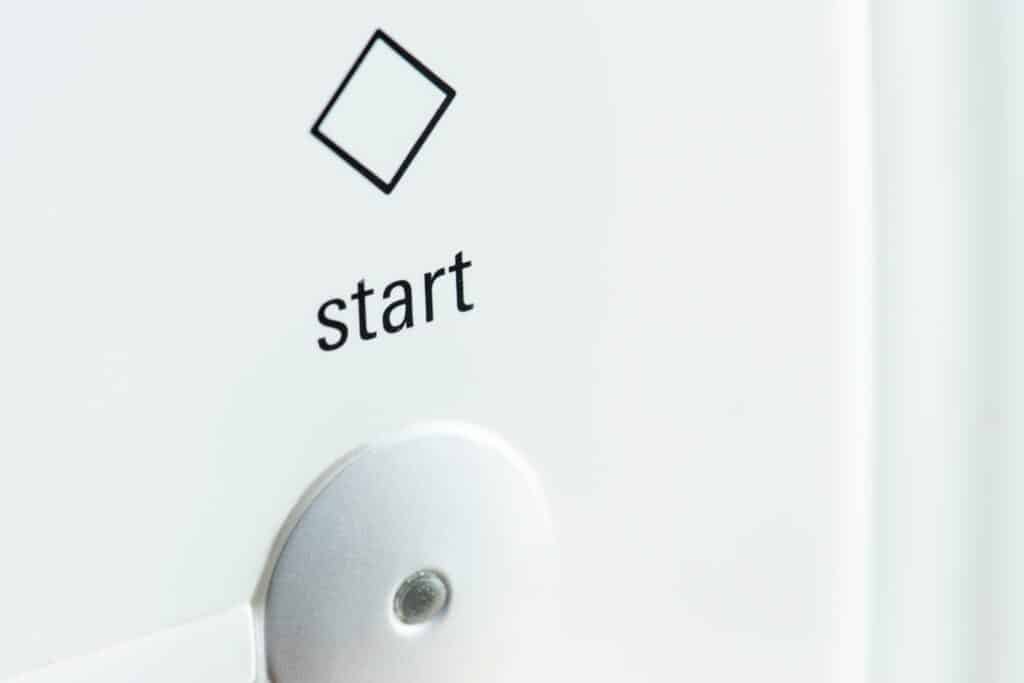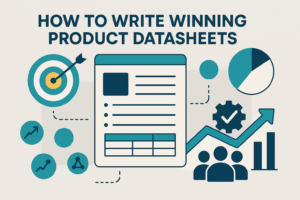By Brant Wilkerson-New
August 21, 2025
Key Takeaways
- A quick start guide (QSG) offers users straightforward initial instructions to get products, software, or services up and running fast.
- Clarity, brevity, and thoughtful sequencing are key when crafting an effective guide.
- Both visual and written elements should be utilized to support different learning styles and maximize usability.
- Quick start guides differ from manuals by focusing solely on essential steps, skipping advanced features and troubleshooting unless absolutely necessary for operation.
- Effective guides include a logical intro, clear steps, easy to understand visuals, and a conclusion that provides next steps.
- Maintaining a consistent, user-focused tone and design standard enhances understanding and brand trust.
- Professional documentation can help enterprises and corporations build consistent, high-quality QSGs at scale.
QSG Fundamentals
Few documents can match the influence of a well-constructed QSG when it comes to shaping a user’s first experience with a product or service. That slim booklet, sheet, or carefully crafted digital page doesn’t just save time; it can often make the difference between a delighted user and set them off to a quick start, and one left frustrated in their first moments with new technology.
What Is a QSG?
A QSG is a brief document that introduces new users to the basic functions of a product, software application, or service. Unlike a comprehensive manual, its intent is to get someone operational as quickly as possible, reducing the learning curve with concise, essential steps. Instead of overwhelming readers with every feature, a QSG leads them only through the minimum required actions to achieve success in that first use.
These documents surface everywhere: in electronics packaging, onboarding portals, industrial equipment boxes, and even web platforms. Their presence signals a brand that values ease, efficiency, and customer satisfaction.
Key Purposes
- Help users begin using the product or service right away.
- Reduce support calls and early user frustration.
- Improve overall satisfaction by accelerating the path to value.
- Set the tone for the product/brand relationship.
QSG vs. User Manual: Key Differences
| Quick Start Guide | User Manual |
|---|---|
| Focus Initial setup and common use |
Focus Detailed features and troubleshooting |
| Length Short (1-10 pages/steps) |
Length Comprehensive, can span dozens or hundreds of pages |
| Audience All users, including first-timers |
Audience Users seeking advanced knowledge |
| Detail Level Essential, need-to-know only |
Detail Level Covers all features and options |
| Visuals Heavy use of diagrams, photos |
Visuals More text-heavy, with intermittent visuals |
| Tone & Language Simple, direct, approachable |
Tone & Language Can be more technical/formal |
Those differences mean QSGs deserve their own special strategies and skills.
Core Elements of an Effective QSG
While styles may vary, high-performing QSGs usually share several structural elements:
- A Concise, Goal-Oriented Introduction
A quick orientation establishes what the user will achieve by following the guide. This can be a one- or two-sentence statement, but it’s essential for setting expectations. - Simple, Sequential Steps
Each action is broken down into manageable, logically ordered steps. The guide doesn’t assume technical expertise and avoids jargon except when it’s necessary (and then defines it). - Visual Aids
Photos, diagrams, screenshots, icons, and illustrations help clarify each instruction, supporting users who process information visually. - Callouts, Tips, and Warnings
Spotlighting critical connections, common problems, or safety issues ensures users don’t miss the important information that could derail their progress. - A Closing Section or “Your Next Step”
Once users finish, guidance for what to do next helps them go beyond the basics (for example, where to locate support resources or how to access advanced options).
The Power of Clarity and Brevity
Writing to be understood, not simply to inform, is at the heart of successful QSG creation.
- Every word must serve a purpose. Trimming fluff and eliminating repetition is as important as choosing the right steps.
- Short, active sentences win. “Attach the antenna” is easier to follow than “The antenna should now be attached.”
- Jargon and technical terms are avoided whenever possible, or are clearly defined.
Building Your Guide: A Step-by-Step Approach
Creating a QSG demands a balance of technical clarity, design expertise, and user empathy. Here’s a proven process to achieve results that delight both first-time and returning users.
Step 1: Know Your Audience
Start by asking:
- Who will be reading this guide?
- What is their likely experience level with similar products?
- What is absolutely vital for them to get started quickly and effectively?
If you’re designing for a general consumer audience, default to simplicity—assume no prior knowledge.
Step 2: Define the Success Goal
Before choosing what to include, define about what counts as a “successful” setup or first use. For example, for an app, this may be having the user log in and import their first file. For a kitchen gadget, perhaps it’s plugging it in and using a base function.
Anything not necessary to reach this first goal should be left out or clearly marked as optional.
Step 3: List and Test the Essential Steps
Draft a list of the absolute required steps, then test them. Can someone with minimal experience follow along without prior instructions?
This stage benefits from “over-the-shoulder” observations or having a newcomer walk through your draft. Their stumbles and questions will highlight where more clarity is needed.
Step 4: Break Steps into Simple Actions
Each instruction should be granular. Rather than:
“Assemble the base and connect the device to power.”
Break it down:
- Place the base on a flat surface.
- Align the connectors on the device with the slots on the base.
- Push down gently until the device clicks into place.
- Plug the power adapter into the device.
- Connect the adapter to a wall outlet.
If multiple choices exist (for example, Wi-Fi or Ethernet setup), separate these pathways with distinct section headings or callouts.
Step 5: Pair Each Step with Supporting Visuals
A picture really can do the heavy lifting of 100 words. Assign a relevant image, diagram, or screenshot to each step, ensuring it is:
- High-contrast and easy to see,
- Free from unnecessary background clutter,
- Clearly labeled (if multiple items appear).
Step 6: Review, Polish, and Simplify
Iterate on language, ordering, and layout. Strip anything that’s not vital. Ensure consistency with any company style guidelines, language glossaries, or design standards.
Check spelling, punctuation, and step numbering. Mismatched instructions or typos do more than confuse—they erode brand trust in those critical first moments.
Step 7: Compile and Format
Sequence the steps in a logical order, using whitespace, bullet points, and bolding to make scanning easier. Group related actions, and use plenty of headings so users can quickly jump to the information they need.
Step 8: Add a “What’s Next?” Section
Encourage users to build on their initial success and offer concise directions for more in-depth guides or customer support channels. Example:
“Congratulations, your printer is ready to use! To get the most from your device, download the full user manual or visit our support website.”
QSG Structure Template
Below is a simple template structure you might use in most scenarios. Adapt as needed to suit your product:
Title
“Quick Start Guide: YOUR PRODUCT”
Intro
Objective: State what readers will accomplish (e.g., “Follow these steps to set up your TimelyChill Ice Cream Maker and prepare your first batch in under 30 minutes.”)
Required components: What they’ll need (all included parts, ingredients, measuring tools, etc.)
Step-by-Step Instructions
- Unpack contents – Identify each component. Include a photo or illustration.
- Physical setup – Assembling the mixing bowl, paddle, and lid. Diagrams showing correct placement and orientation.
- Power on – Switch/button/plug location photo.
- Initial configuration – Pre-freezing bowl (if required). Setting timer or mode.
- First action/example – Make a sample batch of vanilla ice cream with the included recipe. Illustrations showing ingredient pouring and machine in action.
Tips and Troubleshooting Callouts
Notes on common missteps (e.g., bowl not frozen long enough, overfilling with mixture). Quick answers to likely concerns.
Next Steps/Additional Resources
Links to full recipe booklet, cleaning instructions, customer support info, and warranty registration.

QSG Example: TimelyChill Ice Cream Maker
Quick Start Guide: TimelyChill Ice Cream Maker
Get Your First Batch of Ice Cream Ready in Minutes!
You’ll need:
- Your TimelyChill Ice Cream Maker
- Pre-frozen mixing bowl (place in freezer for at least 12 hours)
- Measuring cups & spoon
- Basic ingredients: milk, cream, sugar, and vanilla extract
1. Assemble the Ice Cream Maker
Place the frozen bowl into the machine base. Attach the mixing paddle, then secure the lid until it clicks.
(Illustration of parts labeled)
2. Plug In and Power On
Insert the power cord into a standard outlet. Press the Power button. The indicator light will glow.
3. Prepare Your Mixture
In a separate bowl, whisk together:
- 2 cups heavy cream
- 1 cup whole milk
- ¾ cup sugar
- 2 tsp vanilla extract
4. Pour and Start
Slowly pour the mixture into the bowl through the lid’s opening. Press Start to begin churning. The paddle will rotate automatically.
Tip: For best results, keep mixture below the “MAX” fill line.
5. Check Consistency
After 20–25 minutes, check the texture. The ice cream should be thick and creamy. For a firmer consistency, transfer to a freezer-safe container and freeze for 2–3 hours.
All Done!
Enjoy your homemade vanilla ice cream. Try adding chocolate chips, fruit, or cookie pieces through the mix-in slot while churning.
Next Steps:
- Explore more recipes in the full manual.
- Learn cleaning steps to maintain your machine.
- Register your warranty online.
When and Where to Use QSG
QSGs prove their worth across a surprising range of situations:
- Technology hardware (laptops, printers, routers)
- Consumer electronics (headphones, smart home gadgets)
- Business applications (SaaS onboarding, desktop software)
- Industrial and professional equipment
- Health and medical devices
- Remote onboarding kits for distributed teams
In crowded industries, that first positive impression can have a lasting impact on loyalty and satisfaction.
Best Practices for Outstanding QSGs
The difference between an adequate guide and an excellent one often comes down to execution in the details. Some hallmarks of strong QSG creation include:
- Directness – Cut out filler words. Prioritize action verbs and focus on exactly what is required to move forward.
- User Focus – Put yourself in the shoes of a newcomer. Evaluate whether each step is strictly necessary and if assumptions are reasonable.
- Consistent Design – Use a template that matches corporate branding and ensures diagrams/screenshots are sized for clarity regardless of medium (print, web, mobile).
- Effective Visuals – Every picture, icon, or callout must increase comprehension, not distract. Label visual elements, avoid extraneous details, and use color for emphasis when highlighting warnings or tips.
- Inclusive Language – Write for accessibility. Use language understandable to a wide audience, consider alternative text for images, and stay mindful of users with disabilities.
- Localization & Internationalization – Guides may need to be translated or adapted for global audiences. Planning for translation at the outset—by avoiding idioms and using clearly translatable phrases—saves headaches later.
- Constant Updates – Technology, procedures, and app flows change. Build in a process to review and update QSGs regularly. Outdated instructions frustrate users and erode trust.
Case Study: Transforming User Onboarding with Professional QSGs
Companies who put effort into their documentation often find big returns. Consider a SaaS provider launching a new customer portal. The initial onboarding sequence was handled via a series of long, technical emails and dense PDFs. New client feedback highlighted confusion around standard setup—resulting in frequent calls to support and delayed product adoption.
After investing in professional QSGs with illustrated, single-task instructions, the company saw:
- Calls to support during the initial week drop by over 50%
- Time to first successful login cut in half
- Positive user sentiment in surveys doubled
This pattern repeats across industries. An excellent guide at the right time increases user confidence and helps products stand out from competition.
Empowering Users For a Quick Start
By focusing on clarity, logic, and caring for the user’s time, a great QSG supports your product’s real-world success, straight out of the box or during first login. When instructional content feels effortless, more users get value from your creations, faster.
Putting in the extra thought and polish up front pays dividends down the road. With an effective guide in place, support teams are free to handle unique cases, and your users get what they want: progress, confidence, and a great experience from minute one.
Creating concise, effective QSGs is both an art and a science—combining technical precision, compelling visuals, and an “outsider’s” mindset. If your enterprise or corporation wants to ease onboarding, improve user satisfaction, and reduce support costs, we can help. Our professional technical writing services specialize in building customized QSGs that reflect your brand’s voice and deliver results for your users worldwide. Hire a TimelyText user manual writer to help first-time users into confident, loyal fans.
- About the Author
- Latest Posts
I’m a storyteller!
Exactly how I’ve told stories has changed through the years, going from writing college basketball analysis in the pages of a newspaper to now, telling the stories of the people of TimelyText. Nowadays, that means helping a talented technical writer land a new gig by laying out their skills, or even a quick blog post about a neat project one of our instructional designers is finishing in pharma.





